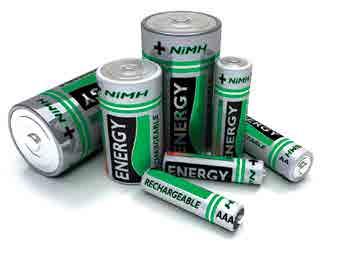
3 minute read
Technology spotlight Advances in technology
NEWS
TECHNOLOGYSPOTLIGHT
Advances in technology across industry
USA joining the Wendelstein 7-X fusion project
The USA is investing over 7.5 million dollars in the construction of the Wendelstein 7-X fusion device at Max Planck Institute for Plasma Physics in Greifswald. In the three-year project, starting in 2011, scientists from the fusion institutes at Princeton, Oak Ridge and Los Alamos are contributing auxiliary magnetic coils, measuring instruments and planning of special sections of the wall cladding for equipping the German fusion device – one of a total of nine projects in the Innovative Approaches to Fusion programme of the USA Department of Energy who will accordingly become a partner in the Wendelstein 7-X research programme.
The objective of fusion research is to develop a power plant that, like the sun, derives energy from fusion of atomic nuclei. This requires that the fuel – an ionised low-density gas, a plasma – be confined in a magnetic field cage having virtually no contract with the vessel wall and then be heated to an ignition temperature of over 100 million degrees. The Wendelstein 7-X fusion device, now being built at Max Planck Institute of Plasma Physics in Greifswald, will, when finished, be the world’s largest and most modern device of the stellarator type. Its magnetic field makes continuous operation possible by simple means.
In the German-American cooperation programme Princeton Plasma Physics Laboratory is making five auxiliary coils for Wendelstein 7-X. The window-size coils, to be installed on the outer casing of the device, are to help precise setting of the magnetic fields at the plasma edge. Oak Ridge National Laboratory is taking on design of the scraper elements for the plasma edge of Wendelstein 7-X. This will make it possible to protect wall sections across which the hot plasma will move to its final position in the first 30 seconds of the 30-minute plasma discharges.
Finally, Los Alamos National Laboratory will provide the Wendelstein programme with measuring instruments for observing the plasma, including refined infrared diagnostics. www.ipp.mpg.de/ippcms/eng/index.html

Storing heat from renewable energy sources
Aproject that is unique in Europe has been launched in Hamburg by E.ON to feed heat from renewable energy sources into the public district heating grid. Home owners who produce heat with the aid of solar-thermal systems can feed it into the grid of E.ON Hanse Wärme. A customer feeding in heat continues to own it, meaning that he can feed in heat in the summer and then withdraw it again in colder months. This enables home owners to dispense with the need for buying their own storage units for their solar-thermal systems as well as the complex control devices required.
“The combination of point-of-use production and central storage will be an essential element of tomorrow’s energy supply. With this project E.ON is showing that it is already possible not only to feed renewable power into the grid but also heat,” said Dr Dierk Paskert, member of the E.ON Energie Board of Management and Chairman of the E.ON Hanse Supervisory Board.
The existing heat storage system of a housing estate in the Hamburg district of Bramfeld has a capacity of 4000m2. For the purposes of this pilot project it has been converted into a multi-function storage system and integrated into the E.ON district heating grid. www.eon.com
Recyling rare earth elements
Umicore and Rhodia have jointly developed a unique process for the recycling of rare earth elements (REE) from Nickel Metal Hydride (NiMH) rechargeable batteries.
This recycling process combines the capabilities of Umicore’s proprietary Ultra High Temperature (UHT) battery recycling process with Rhodia’s rare earth refining competences. The process can service the whole range of NiMH batteries from portable applications to the batteries for hybrid electric vehicles.
The process will enable the recovery of rare earths from NiMH batteries that will be treated at Umicore’s new battery recycling plant in Hoboken. After the separation of the nickel and iron from the rare earths, Umicore will process the rare earths into a high grade concentrate that will be refined and formulated into rare earth materials at Rhodia’s plant in La Rochelle (France).
Sybolt Brouwer, general manager Battery Recycling and Recycling Development at Umicore, commented: “This is the first industrial process that closes the loop of the rare earths contained in NiMH batteries.” www.rhodia.com www.umicore.com










